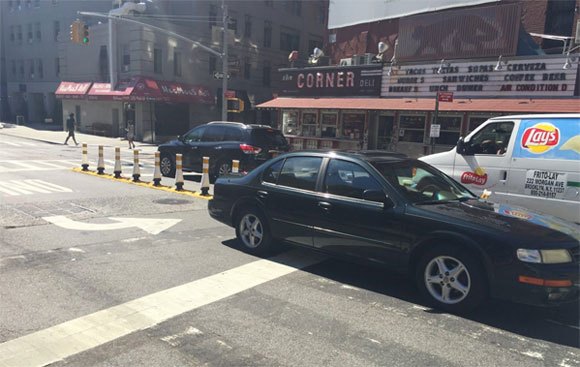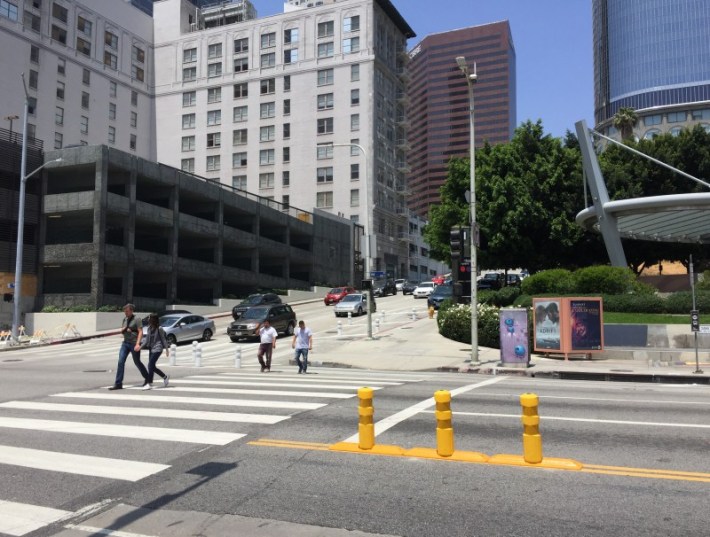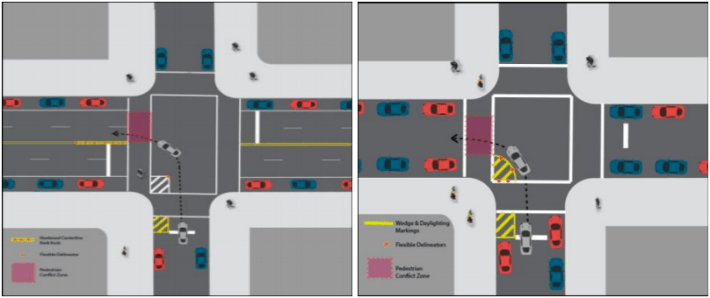Cities are getting smarter about using design tricks to improve safety for a particularly dangerous maneuver: Left turns.
A growing number of cities are installing "slow turn wedges" and other left-turn traffic calming treatments. These treatments — typically posts placed out in the intersection — force drivers to slow down and follow the proper path while making left turns.
About a quarter of pedestrian crashes result from left-hand turns.
New York City is the leader, having installed left-turn traffic calming infrastructure in more than 200 locations in 2016 and 2017. That includes 38 "slow turn wedges" created using rubber curbs and bollards (pictured above). These, however, can only be installed at locations between a one-way and a two-way or another one-way road.
Another tool is what New York calls a "hardened centerline" (below), where bollards prevent left-turners from crossing the centerlines to make a turn.

Unlike "slow turn wedges," these can be installed at any type of intersection. Pedestrian islands can also accomplish the same goal if they are placed strategically, with the added benefit of being more durable and providing refuge for walkers.
This image from New York City DOT shows how these elements can be applied either together, or without the hardened centerline to impose a more controlled, slower turning motion.
According to research by NYC DOT median left turn speeds have decreased 19 percent at intersections where these treatments have been installed. And the number of vehicles crossing the double yellow lines while turning left has decreased 79 percent. The effort, part of New York's Vision Zero campaign, is called "Don't Cut Corners."
In addition to the design features, New York City DOT has also banned left turns at certain high-risk locations.
Now other cities are starting to follow NYC's lead. The National Association of City Transportation Officials is currently helping the city of San Jose install slow turn wedges in a number of locations as part of the city's ambitious Better Bikeways program, according to a spokesperson.
In addition, there are two "slow turn wedges" in downtown L.A., inspired by New York's example.

Streetsblog LA's Joe Linton says they work well.
"Even though there aren’t tons of locations for these — the LA locations are nearly all downtown- where the one-way streets are, and that’s where lots of people walk and take transit," he said. "They're great."
Of course, there's always a backlash from car owners who feel that safety measures are an infringement on their right to speed or drive recklessly. In New York, a recent protest by a state senator went viral when the lawmaker complained about "unsafe" pedestrian islands — while standing completely safely on one for more than two minutes.
It's worth noting that the senator, Marty Golden, was defeated by a street-safety advocate on Election Day.








